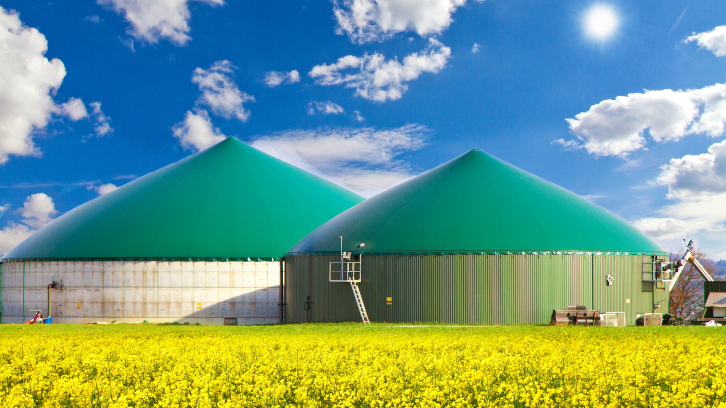A key innovation in the transition to renewable energies: New catalysts for biogas utilization

Biogas has become a promising option as a renewable resource, but its composition includes some impurities, such as carbon dioxide. UAB researchers have used catalysts based on copper nanoparticles immobilized on stable supports, such as chitosan or biochar, for the conversion of carbon dioxide to methanol. This innovation opens the door to a more sustainable and energy-efficient future.
In the current framework of the continuing global energy crises, which are rooted in a non-uniform arrangement of energy sources based on the use of fossil fuels, renewable energy sources have become very important. Within the group of renewable energies, one of those that has seen exponential growth in recent years is biogas.
Biogas is obtained from organic waste through a biological process and is therefore locally available everywhere. Specifically, it is obtained from anaerobic waste digestion, a process of biodegradation of organic waste that takes place in large reactors, where the contained organic matter is transformed into biogas. The major component of this gas is methane, the main compound found in non-renewable natural gas. Therefore, the importance of biogas as an energy carrier and as a substitute for natural gas is crucial.
However, biogas contains, in addition to methane, carbon dioxide and other impurities. The cleaning of these impurities from biogas has been widely studied, but the elimination or conversion of carbon dioxide (which can be found in concentrations of up to 50% in biogas) is especially important if this biogas is to be mostly biomethane, so that it can be used in current natural gas networks. In this sense, the GICOM Group's Squeezer project proposal seeks to transform carbon dioxide into methanol, a liquid that is easy to handle and another energy source on the rise.
In our published article, we have carried out this process of converting carbon dioxide from biogas into methanol using hydrogen and new catalysts based on copper nanoparticles immobilised on stable supports such as chitosan, which is a polysaccharide obtained from chitin. The results have been very promising, obtaining a catalyst with good yields and selectivity, as well as continuous activity and high reusability.
Recently, we have also been testing catalysts where nanoparticles are immobilised on biochar, a highly porous material obtained from forest biomass. This material is also of great interest as a source of highly stable carbon in diverse applications, as a fertiliser and additive that enhances composting and anaerobic digestion processes.
Scanning electron microscopy image showing the stable supports studied, chitosan (right) and biochar (left), to immobilize the catalytic copper nanoparticles for the conversion of carbon dioxide to methanol.
In essence, the article highlights the promising progress in the conversion of carbon dioxide from biogas into methanol using new catalysts based on copper nanoparticles immobilised on stable supports, chitosan and biochar. This research is key for the improvement of composting and anaerobic digestion processes applied in the areas of transition to renewable energies.
Antoni Sánchez Ferrer
Composting research group (GICOM)
Universitat Autònoma de Barcelona
References
Seyed Alireza Vali, Ahmad Abo Markeb, Javier Moral-Vico, Xavier Font, Antoni Sánchez. A novel Cu-based catalyst supported in chitosan nanoparticles for the hydrogenation of carbon dioxide to methanol: From the optimization of the catalyst performance to the reaction mechanism. Catalysis Communications, 182, 2023, 106747. https://doi.org/10.1016/j.catcom.2023.106747

